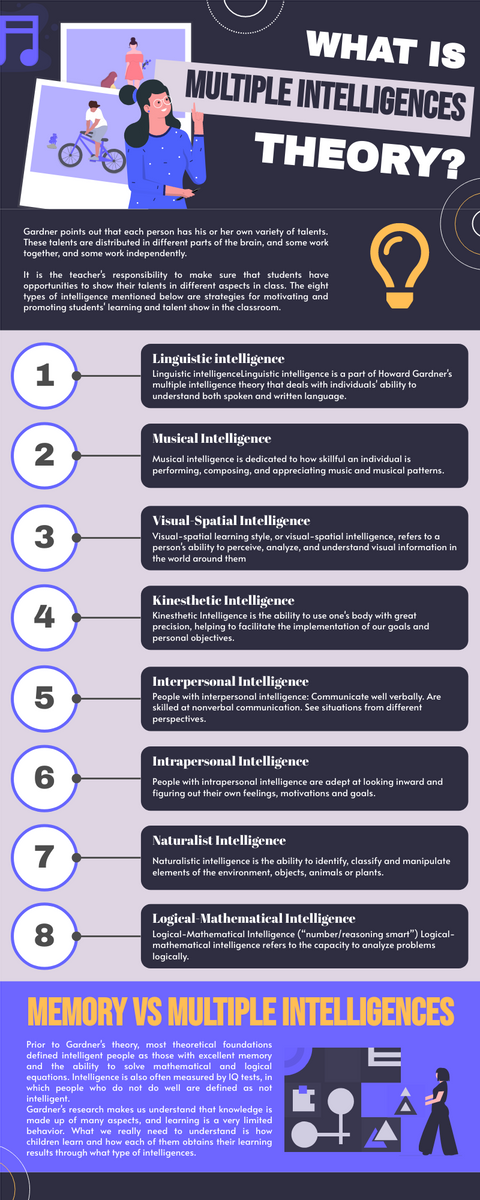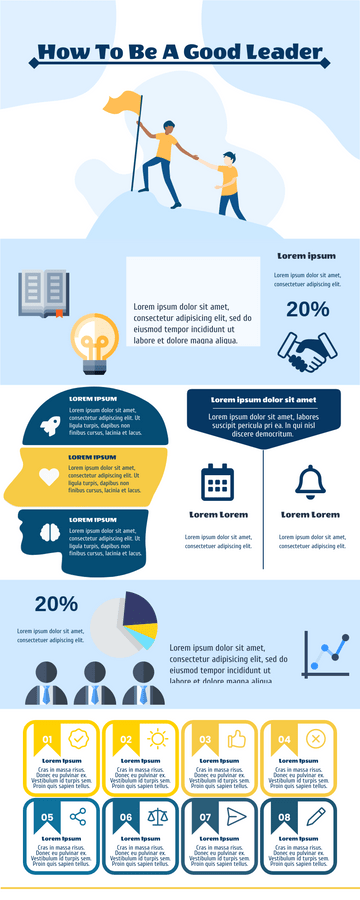Infographic Of 8 Multiple Intelligences You Need To Know
What is Multiple Intelligences Theory?
The theory of multiple intelligences was put forward by Professor Howard Gardner of Harvard University in the 1980s. The core of this theory is that everyone is born with more than one talent and intelligence, and these exist in different forms. This theory can help us understand how students learn and how teachers teach.
Memory vs Multiple Intelligences
Prior to Gardner's theory, most theoretical foundations defined intelligent people as those with excellent memory and the ability to solve mathematical and logical equations. Intelligence is also often measured by IQ tests, in which people who do not do well are defined as not intelligent.
Gardner's research makes us understand that knowledge is made up of many aspects, and learning is a very limited behavior. What we really need to understand is how children learn and how each of them obtains their learning results through what type of intelligences.
The Multiple Intelligences Theory
Gardner points out that each person has his or her own variety of talents. These talents are distributed in different parts of the brain, and some work together, and some work independently.
It is the teacher's responsibility to make sure that students have opportunities to show their talents in different aspects in class. The eight types of intelligence mentioned below are strategies for motivating and promoting students' learning and talent show in the classroom.
Here are Gardner's eight types of intellect:
1. Linguistic intelligence
2. Musical Intelligence
3. Visual-Spatial Intelligence
4. Kinaesthetic Intelligence
5. Interpersonal Intelligence
6. Intrapersonal Intelligence
7. Naturalist Intelligence
8. Logical-Mathematical Intelligence



























































